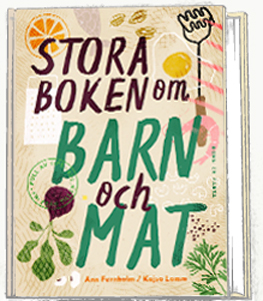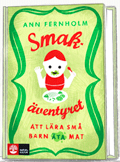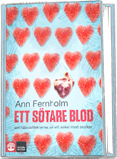Idag spikar Aftonbladet fast: Biff är lika farligt som att röka | Nyheter | Aftonbladet. Det fick mig att tänka på Sir Richard Doll, den engelske forskare som hittade kopplingen mellan rökning och lungcancer. Han lär ha sagt att om man någon gång ska ge ett folkhälsoråd som kan tänkas gå emot vad vi gjort under vår evolution, ska de råden vara mycket väl underbyggda.
Den stenåldersmänniska som lyckades fälla något storvilt åt nog gärna köttet. Kanske grillat över en öppen eld.
Vill du läsa fler liknande inlägg? Titta i kategorin Övrigt, Okategoriserade. Stötta mitt arbete via Patreon.







Richard Arppe ∙ 9 mars, 2014 kl. 08:30
Ann,
LOL. Appeal-to-nature -fallacy, anymore? The cavemen endured famine (under drought conditions, an unsuccessful hunt, or inability to hunt due to physical inactivity or illness) and carried cholesterol lowering parasites, tapeworms, schistosomiasis, etc. In experimental models, parasite induced LDL lowering has been directly shown to regress atherosclerotic arteries. Modern humans with parasitic infections show altered lipid metabolism.
Role of cholesterol in parasitic infections
http://www.ncbi.nlm.nih.gov/pmc/articles/PMC1142336/
Stanley RG, Jackson CL, Griffiths K, Doenhoff MJ. Effects of Schistosoma mansoni worms and eggs on circulating cholesterol and liver lipids in mice. Atherosclerosis 2009 Nov;207(1):131-8. PMID: 19464685.
Bansal D, Bhatti HS, Sehgal R. Altered lipid parameters in patients infected with Entamoeba histolytica, Entamoeba dispar and Giardia lamblia. Br J Biomed Sci. 2005;62(2):63-5. PMID:
≪ | ≫ |
Richard Arppe ∙ 9 mars, 2014 kl. 10:16
Ann,
med tanke på inuiter, tror du att evolution bryr särskilt mycket om våra long-term health?
In 1940, based on years of clinical practice and reviewing medical reports, Bertelsen who is considered the father of Greenland epidemiology stated in regards to the mortality patterns amongst the Greenland Inuit that:
”..arteriosclerosis and degeneration of the myocardium are quite common conditions among the Inuit, in particular considering the low mean age of the population”.
In 1904, Bertelsen proved the existence of cancer in the native Inuit, diagnosing a case of breast cancer. During the following decades researchers documented that the existence of cancer was exceedingly common among the Inuit despite their relatively short life expectancy. Consistent with Bertelsen’s findings, an Inuit predating western contact who was mummified in approximately 1475, 450km north of the Arctic Circle was shown to have evidence of cancer, likely of the breast.19 It has also been documented that numerous preserved pre-contact Inuit who were mummified dating all the way back to 1,500 years ago had a severe degree of atherosclerosis, osteoporosis, and osteoarthritis, consistent with studies of Inuit living in the 20th century.20 21 22 23 Other evidence of poor health among the pre-contact Inuit includes iron deficiency anemia, trauma, infection, dental pathology, and children with downs syndrome and Perthes disease.24 25
http://healthylongevity.blogspot.fi/2012/08/forks-over-knives-and-healthy-longevity_17.html
≪ | ≫ |
Richard Arppe ∙ 9 mars, 2014 kl. 11:11
Ann,
min LDL är 69,6mg/dl, har du normal LDL värden med tanke på biologin och evolution? Stenåldersmannen hade väldigt lågt LDL kolesterol. Parasitic infections lower cholesterol.
Optimal low-density lipoprotein is 50 to 70 mg/dl: Lower is better and physiologically normal (1,3 mmol/l-1,8mmol/l)
”The normal low-density lipoprotein (LDL) cholesterol range is 50 to 70 mg/dl for native hunter-gatherers, healthy human neonates, free-living primates, and other wild mammals (all of whom do not develop atherosclerosis). Randomized trial data suggest atherosclerosis progression and coronary heart disease events are minimized when LDL is lowered to <70 mg/dl. No major safety concerns have surfaced in studies that lowered LDL to this range of 50 to 70 mg/dl. The current guidelines setting the target LDL at 100 to 115 mg/dl may lead to substantial undertreatment in high-risk individuals".
http://content.onlinejacc.org/article.aspx?articleid=1135650
≪ | ≫ |
Nostents4me ∙ 9 mars, 2014 kl. 21:10
LDL cholesterol has nothing to do with CVD unless a small particle size can be documented.
Please read Wheat Belly by William Davies. Davis is a cardiologist and went from stenting to advise. Today his patient progress to health instead of the usual way. Personally I use the Apo B/Apo A quotient to establish heart health and since it has dropped below 0.7 after going low carb high fat I now feel quiet safe. Yes, the inuits may not have got enough greens or vegetables in their diet and maybe there is an upper limit even to omega-3 not supported with enough slow oxidation saturated fat.
≪ | ≫ |
ST1968 ∙ 10 mars, 2014 kl. 09:17
Hej! Som vanligt skönt att du, Ann, håller fokus på irrlärorna om kött och kolesterol som dyker upp titt som tätt i medierna. Kunskap och information vinner alltid i längden även om del hittar mer eller mindre väl underbyggda och fantasifulla hypoteser om hur farligt kött och kolesterol är.
En person som har osedvanligt bra koll på läget när det gäller forskningsläget avseende kolesterol (och mycket annat som rör människors och djurs biokemi), är Petro (Peter) Dobromylskyj (http://high-fat-nutrition.blogspot.se/ ). På sin blogg har han under de senaste åtta åren oförtrutet granskat mycket av den forskning som sprids inom fältet och ibland i media. I högermarginalen på bloggen har han listat alla bloggposter i bokstavsordning. Han har just nu 31 st som behandlar kolesterol i olika avseenden. Tror man att kolesterolet orsakar sjukdom har man en rejäl intellektuell uppförsbacke framför sig. Mycket tankeväckande och ibland sanslöst rolig läsning. Petro har ett intellekt man kan sortera in under de allra skarpaste…och glimten i ögat 🙂
≪ | ≫ |
ST1968 ∙ 10 mars, 2014 kl. 09:54
Förresten, jag måste slå ett slag för Peter Dobromylskyjs senaste bloggpost ”Would you like soya oil poured over your methionine spiked casein?” http://high-fat-nutrition.blogspot.se/2014/03/would-you-like-soya-oil-poured-over.html
Sista meningen i bloggposten ger mig lite rysningar: ” How do these people sleep at night?” Den refererar till författarna/”forskarna” bakom studien i bloggposten.
≪ | ≫ |
Richard Arppe ∙ 10 mars, 2014 kl. 17:16
An anti-atherogenic effect of Schistosoma mansoni infections in mice associated with a parasite-induced lowering of blood total cholesterol
http://journals.cambridge.org/action/displayAbstract?fromPage=online&aid=133171
≪ | ≫ |